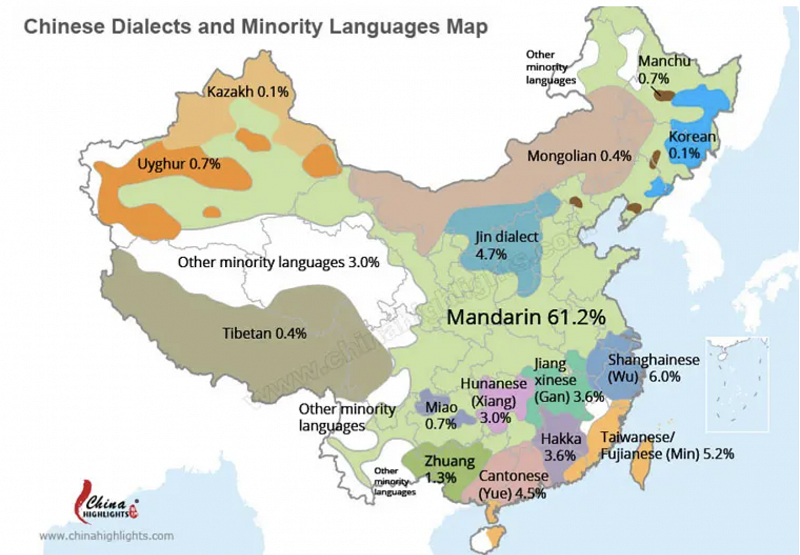Exploring the Ethnic Groups of China
China may be known for having vast terrain, with borders touching 14 other countries, where geographic climates can range from snowy mountains to sandy deserts. But did you know that inside those borders lives a world of diversity among China’s 1.4 billion people?
Among China’s population there exist 56 officially recognized ethnic groups, but according to some sources, there are estimated to be well over 200. Each of these groups has their own language, culture, cuisine, celebrations, and traditions that make it unique, and are a part of China’s long history that dates back thousands of years.
Let's take a closer look at four different ethnic groups that exist today within China; the Han’s, Zhuang, Mongols, and the Manchu’s.
The Han’s
The Han Chinese are by far the largest ethnic group in China, comprising an estimated 92% of China’s population. In fact, the Han Chinese are the largest ethnic group in the entire world, not just China, with 19% of the world’s population identifying as Han. The Han’s reach even spans outside of China, being the majority ethnic group in Singapore as well.
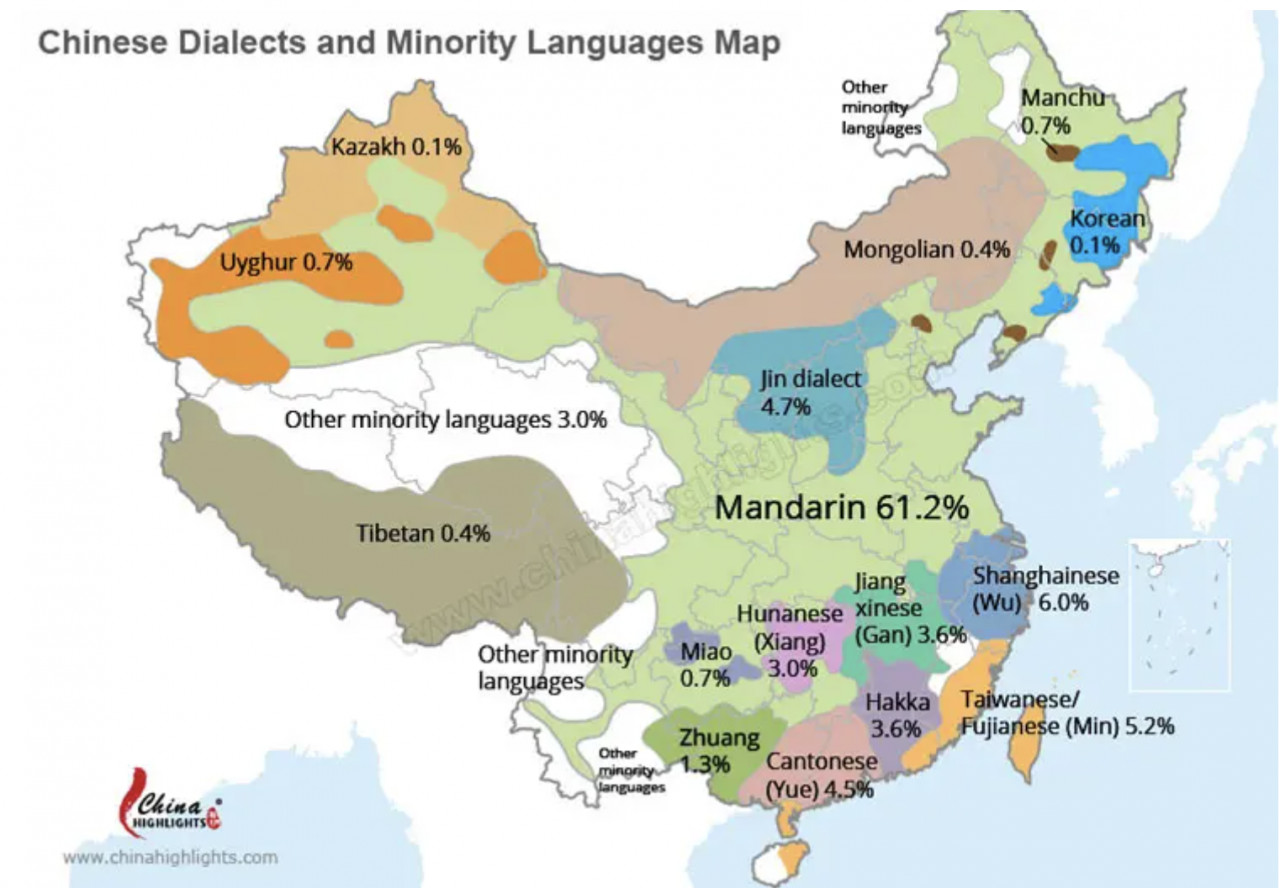 Map depicting the different dialects and minority languages throughout China. [Photo Credit: China Highlights]
Map depicting the different dialects and minority languages throughout China. [Photo Credit: China Highlights]
Mandarin is the primary language of the Han people, and hence the official language of China, and with such a vast majority of the population identifying themselves as Han, you can find their influence at nearly every corner of China.
The written history of the Han people dates back to 1,000 B.C., which is one of the longest unbroken written histories in the world aside from Jewish people. The ancestral homelands of the Han, where they live in the highest concentration, are along the middle and lower parts of the Yellow River Basin, the Yangtze River basin, and the Pearl River. With an agricultural and urban culture, it is not until recent years that you would find the Han people in mountainous or desert regions. Despite being such a large group, the Han people still share a common culture of celebrating traditional cuisine, clothing, and customs, which have been passed down from its ancient history.
The Zhuang
All other ethnic groups in China outside of the Han’s are considered to be minority groups, and the largest minority in China is the Zhuang people, whose population today is around 18 million. Located in Southern China, the Guangxi Zhuang Autonomous Region often attracts tourists for the famous terraced rice fields and gorgeous terrain.
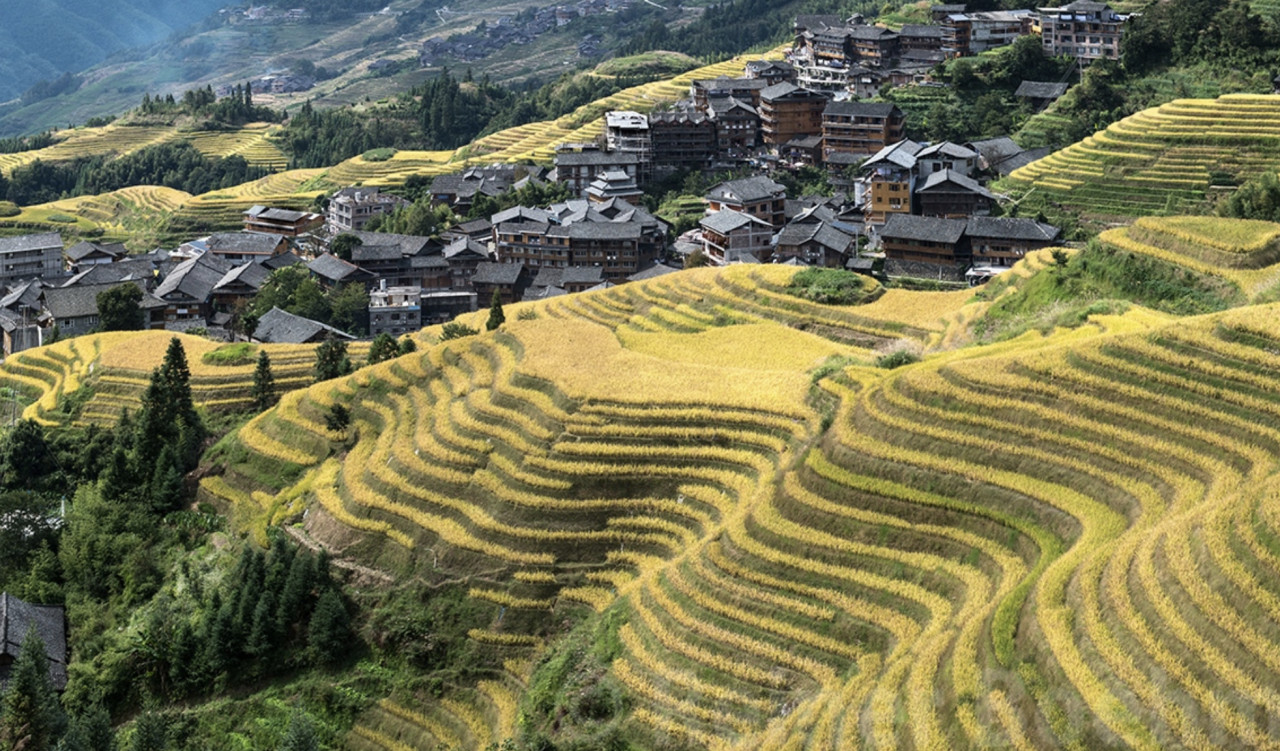 Ping'an village, located in Guangxi, China is famous for its rice paddies. [Photo Credit: reinerboehme]
Ping'an village, located in Guangxi, China is famous for its rice paddies. [Photo Credit: reinerboehme]
While a majority of the Zhuang people speak Mandarin, they do have their own distinct Zhuang language that is a member of the Tai language family. With a rich history of their own, the Zhuang people have adapted their location, religion, and language where necessary throughout China’s history in order to adapt and survive.
When it comes to cuisine, the Zhuang’s diet consists of rice and corn, all different kinds of meat, pickled vegetables, and a common drink called oil tea. Some other traits that are distinct to the Zhuang people are their traditional clothes, worn on special occasions, their unique handicrafts, and their love for singing!
The Mongols
The Mongols, an ethnic minority group with a population of 6 million in China, and 4 million in Mongolia and Russia, have a history closely tied to the Han's, with many Mongols today speak Mandarin in addition to their own dialect. However, they are most famously known for establishing one of the largest empires in world history.
Before the birth of Genghis Khan, the Mongols were a nomadic and tribal people that often faced conflict among one another. Through his conquests, Genghis Khan united the Mongol tribes and embarked on larger and larger invasions, ultimately ruling over a third of Asia by the time of his death in 1227.
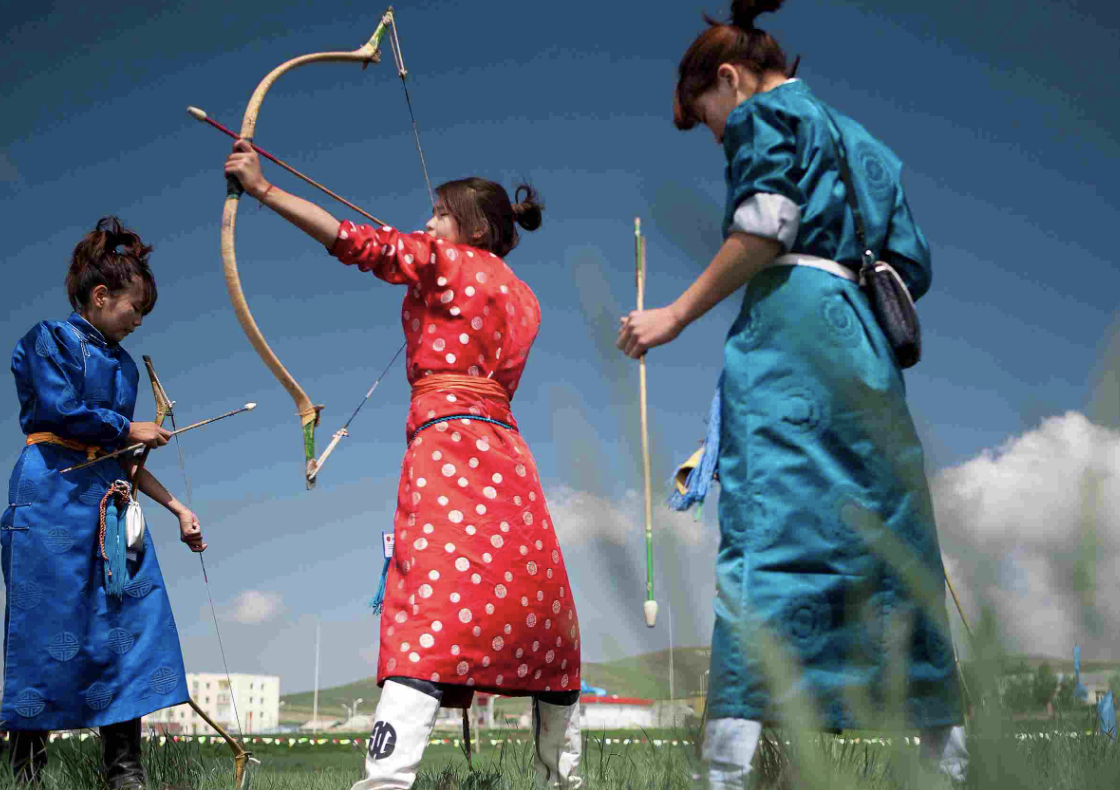 Women archers competing in Mongolia’s Naadam games. [Photo Credit: VCG Photo]
Women archers competing in Mongolia’s Naadam games. [Photo Credit: VCG Photo]
The Mongols still uphold the traditions of their ancestors during that time, who lived in huts in the extensive grasslands of northern China and excelled in horseback riding and combat. To preserve these traditions, Mongolia hosts an annual festival and sporting event called Naadam, which focuses on the three traditional "manly" sports of Mongolia: horse racing, wrestling, and archery. Since the 1950’s, women have been able to compete in archery competitions during Naadam as well, which is as equally attended as the men's sports.
The Mongol’s diet, both within and outside of China, has roots in their nomadic heritage and thus primarily consists of meat and dairy products. Today, rice, noodles, and bread dishes have also been incorporated, but meat and dairy remain prevalent, as well as the traditional Mongolian hot pot. Being situated along the Silk Road allowed silk to be a common material used in Mongolian traditional clothing, and a silk cloth called a Hada is often presented as a welcoming gift to guests.
The Manchu
The Manchu, which make up about 4.2 million people in China today, serve as a cautionary tale for ethnic minorities in China on preserving their culture and language, as only around 50 people today still speak the native language of the Manchu.
Despite this, Manchu’s boast a very proud history, having defeated the Ming dynasty in the 17th century, establishing the Qing dynasty which became the most powerful and richest empire in Asia. Due to their widespread influence, the original language and culture of the Manchu people was lost, and by the time the final emperor of the Qing dynasty was in power, he could not even read or write the Manchu language.
Today, a majority of Manchu people live in the cold northeastern part of China, and their diet reflects this lifestyle. Similar to the diet of Koreans, the Manchu’s cuisine consists of a lot of pickled vegetables and hot pot. One big difference, however, is Machu's preference for wheat over rice.
As recently as the last century, Manch men were known for wearing very distinct hairstyles, with their hair tied back into a ponytail and the front part of their head shaved, as pictured below. During this time period, women often wore headgear that created a fan shape that was often decorated with flowers and tassels.
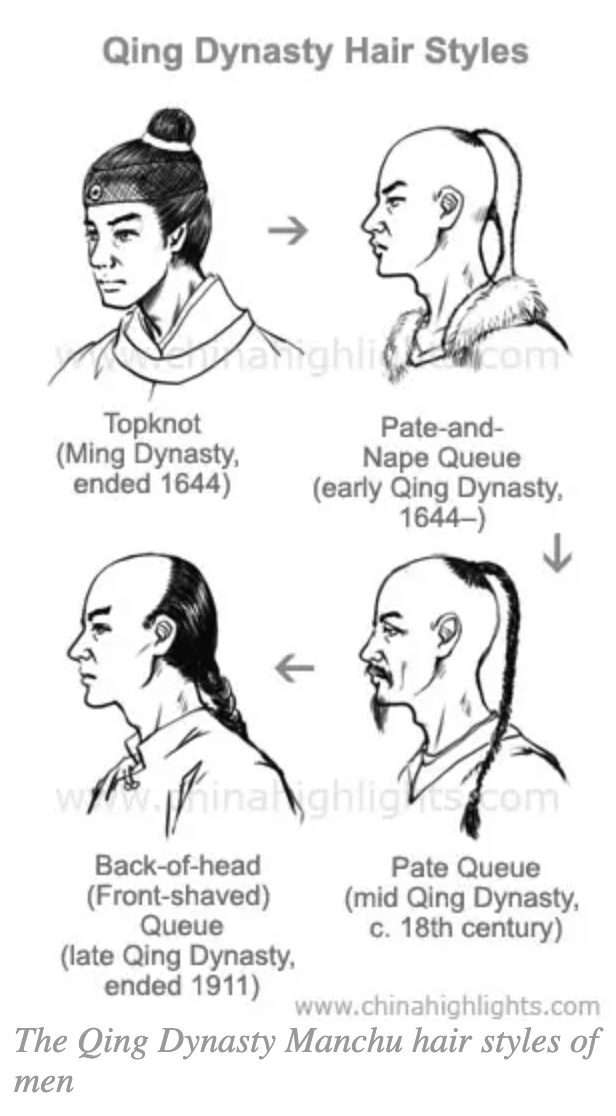 Photo chart depicting the different hairstyles among the Manchu’s throughout history. [Photo Credit: China Highlights]
Photo chart depicting the different hairstyles among the Manchu’s throughout history. [Photo Credit: China Highlights]
Many individuals may have limited knowledge of China's rich and diverse history and culture as they may only have encountered it through media representation or Chinese food in their area. Despite this, China is a hub of multiculturalism with over 200 distinct ethnic groups, each contributing to its vibrant and multifaceted culture that continues to astound and enchant travelers. With China slowly emerging from the aftermath of the Covid-19 pandemic and opening up to the world once again, it is important to keep different regions in mind when planning your next trip to China. There is a wealth of experiences waiting to be explored and discovered within the country's borders.
